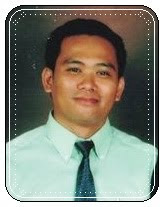defining of mental health
- the world health organization(WHO) defines health as "a state of complete physical, mental and social well-being, not merely the absence of disease or infirmity"
- in 1991 the australian health ministers(AHM) conference provide a definition of mental health that will serve as a starting point for discussion. this definition assert that mental health is " ..the capacity of individuals within the groups and environment to interact with one another in ways that promote subjective well-being, optimal development in use of mental abilities (cognitive, affective and relational) and achievement of individual and collective goals consistent with justice"
the nursing process is defined as an organized, systematic method of plning and providing individulized care to clients. the nursing rpocess is a tool promoting organization and utilization of the steps to chieve desired outcomes. the steps of the nursing process build upon each other, overlapping previous nd subsequent steps. the nursing process may be used with clients throughout their life span and inny setting where care is provided to clients.
defining of nursing process in mental health
The nursing process is a scientific and systematic method for providing effective individualized nursing care and serves as an aid in resolving client problems. This problemsolving approach allows the nurse to help the
client achieve a maximal level of functioning and well-being. Vital to this process is the therapeutic climate
of the interaction between the client and members of the mental health team. for a nurse This trusting relationship is vital to the successful outcome of improved functioning and well-being of the client.
Therapeutic use of self Therapeutic use of self
- Self awareness Self awareness
- we must be willing to look at our we must be willing to look at our thoughts, feelings, and behaviors honestly thoughts, feelings, and behaviors honestly
- without judgment without judgment
- Unconditional positive regard toward the Unconditional positive regard toward the client and ourselves client and ourselves
Integral to the nursing process approach to nursing care is an organized method of problem called the care plan, which is developed from the data that are gathered during the initial phase. It consists of five steps that provide planned actions for resolving the problem:
A. Nursing assessment
Assessment begins when the client is admitted or contact is made for the first time. Assessment continues as the cycle of the nursing process progresses and new information or changes occur in reference to the client.
An assessment interview is usually conducted within the psychiatric setting; however, the psychosocial needs of a client are part of any nursing assessment, regardless of the setting, because symptoms seen in the mental health setting can also be seen in any area of health care. A standard assessment tool helps categorize the information received by the nurse. a basic psychosocial nursing assessment usually includes the client’s history and mental emotional status and encompasses both subjective and objective data.
1. Subjective Data.
Subjective information is provided by the client. This information may need to be validated by other sources such as family, friends, law enforcement officers, or others who are involved. The client’s information may be supported or contradicted by others. The data include the client’s history and perception of the present situation or problem in addition to feelings, thoughts, symptoms, or emotions he or she may be experiencing.
When collecting subjective data it is important for the nurse to be as accurate and descriptive as possible.
Examples of Subjective Data
- Name and general information about the client
- Client’s perception of current stressor or problem
- Current occupational or work situation
- Any recent difficulty in relationships
- Any somatic complaints
- Current or past substance use
- Interests or activities previously enjoyed
- Sexual activity or difficulties
Objective information is observed by the nurse or provided by others who are familiar with the client or additional members of the health care team. The assessment includes the physical, emotional, intellectual, and social aspects of the client. A physical assessment includes medical history, past illnesses or surgeries, medication history, allergies, vital signs, height and weight, diet, and head-to-toe systems evaluation. Social issues may include relationships, family history of mental illness, religious and cultural beliefs, and specific health practices. The client’s emotional state, behavior, and thinking processes are all part of the mental assessment.
Examples of Objective Data :
- Physical exam
- Behavior
- Mood and affect
- Awareness
- Thought processes
- Appearance
- Activity
- Judgment
- Response to environment
- Perceptual ability
- Appearance (grooming, dress, hygiene, eye contact, skin markings, posture, facial expression)
- Motor activity (pacing, slow, rigid, relaxed, restless, combative, bizarre, gait, hyperactive, retarded, aggressive)
- Attitude (cooperative or uncooperative, friendly, hostile, apathetic, suspicious)
- Speech pattern (speed, volume, articulation, congruence, confabulation, slurring, dysphasia)
- Mood (intensity, depth, duration, anxious, sad, euphoric, labile, fearful, irritable, depressed)
- Affect (flat or absence of emotional expression, blunted, congruence with mood, appropriate or inappropriate)
- Level of awareness (level of consciousness, attention span, comprehension, processing)
- Orientation (time, place, person)
- Memory (recent and remote)
- Understanding of illness/insight (ability to perceive and understand illness—symptoms as related to illness)
- Ability to describe stressors (internal or psychologic/physical in nature, and external or actual loss)
- Thought processes (speed, content, organization, logical or illogical, delusions, abstract or concrete)
- Perceptual disturbances (hallucinations, illusions, depersonalization, distortions)
- Judgment (problem-solving and decision-making ability)
- Adaptive or maladaptive defense mechanisms
- Relationships (attainment and maintenance of satisfying interpersonal relationships)
Establishing a nursing diagnosis from collected data is the second step in the nursing process. The nurse analyzes all data gathered and compares it to normal functioning or values to find out if a problem or a potential problem exists. A nursing diagnosis is not a medical diagnosis but an identification of a client problem based on conclusions about the collected data. A nursing diagnosis may be an actual or potential health problem, depending on the situation. The most commonly used standard is that of the North American Nursing Diagnosis Association (NANDA)
Formulating a nursing diagnosis consists of three parts:
1. the actual or potential problem related to the client’s condition
2. the causative or contributing factors
3. a behavior or symptom that supports the problem.
A nursing diagnosis is correctly written as follows: (problem) risk for injury, related to (contributing factor) marital breakup, evidenced by (behavior) suicidal ideation and gestures. Although a medical diagnosis is not used as the etiology of a nursing problem, signs and symptoms of the condition may be reflected in the cause. This is illustrated by a client who has sensory-perceptual alteration, related to auditory hallucinations, evidenced by talking to people who are not physically present. Determining the problem provides the groundwork for planning nursing interventions to meet the needs of the client for which the nurse is responsible.
C. Expected Outcomes
The next phase of the nursing process involves planning measurable and realistic outcomes that will anticipate the improvement or stabilization of the problem identified in the nursing diagnosis. These outcomes are defined
in terms of short-term goals that address the immediate unmet needs of the client and long-term goals that achieve the maximal level of health that is realistic for the individual client at the time of discharge and as a member of society. These goals should be determined in collaboration with the client, so as to increase cooperation and compliance with therapeutic interventions. Listed below are examples of both shortterm and long-term outcome criteria for the nursing diagnosis, sensory/perceptual alteration, related to auditory hallucinations.
Short-Term Outcomes
- Client symptoms of auditory hallucinations will decrease within 48 hours.
- Client does not harm self or others in next 48 hours.
- Client identifies feelings associated with hallucinations with each episode.
- Client reports decrease in anxiety level within 24 hours.
- Client demonstrates understanding of need for continued compliance with medication therapy by discharge.
- Client demonstrates awareness that hallucinations are the result of internal conflict within 1 week.
- Client identifies and demonstrates ways to maintain contact with reality at onset of symptoms by discharge.
- Client identifies environmental factors that precipitate the hallucinations by discharge.
- Client participates in activities that reinforce reality during hospitalization within 1 week.
Nursing interventions are actions taken by the nurse to assist the client in achieving the anticipated outcomes. It is important to plan actions that are appropriate for the individual client and take into consideration the level of functioning that is realistic for that person. What may be realistic for one person may be unattainable for another. The written plan is a collaborative effort between all members of the health care team and is communicated to each health care worker. This helps to ensure the continuity of care and consistency in the implementation of interventions by all personnel. Consistency is a vital component of the therapeutic milieu.
Nursing interventions that focus on mental health care do not involve intensive physical care nursing skills. Rather, the nurse focuses on observing behaviors and symptoms, improving communication strategies, and assisting the client in problem-solving with improved overall functioning. Nursing interventions are implemented according to the nurse’s level of practice.
Nursing Strategies for Mental Health Nurses
- Respect and accept each client as he or she is.
- Allow client opportunity to set own pace in working with problems.
- Nursing interventions should center on the client as a person, not on control of the symptoms. Symptom are important, but not as important as the person having them.
- Remember, all behavior has meaning—an attempt to prevent the occurrence or decrease the intensity of anxiety.
- Recognize your own feelings toward clients and deal with them.
- Go to the client who needs help the most.
- Do not allow a situation to develop or continue in which a client becomes the focus of attention in a negative manner.
- If client behavior is bizarre, base your decision to intervene on whether the client is endangering self or others.
- Ask for help—do not try to be a hero when dealing with a client who is out of control!
- Avoid highly competitive activities, that is, having one winner and a room full of losers.
- Make frequent contact with clients—it lets them know they are worth your time and effort.
- Remember to assess the physical needs of your client.
- Have patience! Move at the client’s pace and ability.
- Suggesting, requesting, or asking works better than commanding.
- Therapeutic thinking is not thinking about or for, but with the client.
- Be honest so the client can rely on you.
- Make reality interesting enough that the client prefers it to his or her fantasy.
- Compliment, reassure, and model appropriate behavior.
During the evaluation phase of the nursing process, the nurse evaluates the success of the nursing interventions in meeting the criteria outlined in the expected outcomes. Either the goal has been achieved, some progress has been made toward the intended outcome, or no steps forward have been observed or documented. Specific client behaviors may be reviewed by the entire mental health care team to determine the overall success of the treat-ment plan. If a goal has been partially met, there may be supporting data to indicate continuance of the current plan of care. This approach recognizes that the client may need more time to make changes and adjust to them.
The evaluation phase is a form of validation for the entire nursing process in the delivery of care to the client. Continued data collection may indicate new problems or alterations in the original nursing diagnoses. Criteria are reevaluated to clarify realistic and measurable terms for the individual client. Nursing strategies are reevaluated for effectiveness. This persistence in maintaining a therapeutic approach toward resolution of client problems provides the continuity needed to expedite the treatment process.
Nursing Diagnoses | Expected Outcomes | Nursing Interventions | Evaluation |
Risk for self-injury, related to suicide attempt, evidenced by suicide overdose with use of alcohol Coping, ineffective individual,related to life events, as evidenced by drinking more and inability to meet role expectations Self-esteem, situational low, related inability to handle life events, evidenced by feelings of self-blame and inadequacy | -Does not engage in selfdestructive behavior while hospitalized -Begins to explore reasons for substance abuse by 48 hours -Expresses feelings of sadness and despair in 48 hours -Signs contract that she will not harm herself in 24 hours -Performs activities of daily living in next 2 days -Communicates feelings about current situation in next 2 days -Participates in determining goals for improvement in 2 days -Identifies at least two adaptive coping strategies in 2 days -Implements one adaptive coping strategy by the end of 1 week -Identifies support systems available to her by the end of 1 week -Refrains from self-blame and negative self-talk by end of 1 week -Participates in self-care with interest in selfimprovement in 2 days -Identifies positive life accomplishments And personal strengths in 3 days -Identifies internal factors that harm self-esteem in 1 week -Participates in unit activities in 2 days -Discusses realistic goals for self-improvement by discharge | -Monitor frequently for signs of oversedation -Monitor vital signs every half-hour -Assess for social withdrawal or isolation -Assess for selfdestructive thoughts -Remove potentially dangerous items from room -Provide quiet, soothing environment -Monitor mood, affect, and behavior -Help to perform activities of daily living -Encourage to make decisions about self-care -Encourage expression of feelings -Help to identify internal factors of self-blame -Teach and model adaptive coping strategies -Encourage to use adaptive coping skills -Praise efforts and successes in coping -Establish trusting relationship -Provide safe and supportive environment -Encourage to discuss life events -Assist to distinguish between life situations over which she does and does not have control -Help to recognize negative self-talk and selfdefeating statements -Encourage to keep journal of negative and defeating thoughts -Encourage social interaction with others -Assist to identify personal strengths and accomplishments -Provide positive reinforcement for expression of positive feelings and thoughts | -Recovers from overdose without complications -Expresses feelings about substance abuse -Discusses harmful effects of substance use -Participates in goalplanning sessions -Identifies self-talk that is destructive -Has not harmed self during hospitalization -Develops supportive network of family, friends, and support group -Independently performs activities of daily living -Makes independent decisions about self-care -Openly discusses feelings and emotional response to life situations -Identifies self-defeating thoughts and behaviors -Demonstrates use of adaptive coping strategies -Demonstrates trust in mental health team -Identifies realistic views of life events -Demonstrates ability to recognize negative thought patterns -Reframes negative selftalk with more realistic perspective -Uses positive statements to describe self -Identifies strengths and acknowledges accomplishments -Interacts with others using positive approach |
Bibliography
- clinton michael, nelson siobar. "mental health nursing practice". 1996. by prentice hall australia pty ltd.
- seaback, wanda walker. "nursing process, consept and application". 2006. thomson delmar learning, a part of the thomson corporation
- Doenges, M. E., Townsend, M. C., & Moorhouse, M. F. (1995). Psychiatric care plans (3rd ed.). Philadelphia, PA: F. A. Davis.
- yosep, iyus. "keperawatan jiwa(edisi : revisi)" . 2007. PT revika aditama : bandung
- denise coe, barbara fickley. "mental health nursing".2005.








0 comments:
Posting Komentar